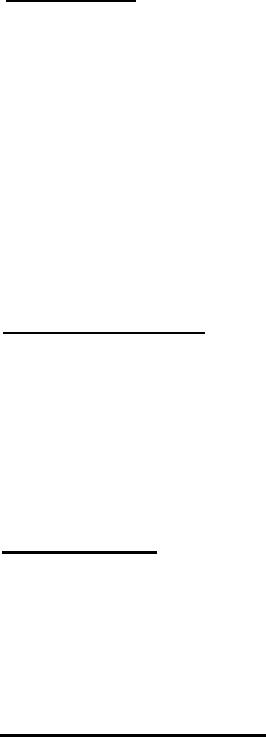 |
|||
|
|
|||
| ||||||||||
|
|  MIL-R-45979
4 . 6 . 3 Headspace test. Rifles shall be gaged for headspace (see
4 . 5 . 1 0 . 4 ) after proof firing, prior to acceptance, using the inspection
equipment in accordance with Drawing F7274733. The rifle shall be held
i n a horizontal position (approximately) with the bolt open. The spring
loaded plug shall then be inserted in the barrel chamber and the bolt
m a n u a l l y returned to battery position. T h e indicator portion of the gage
s h a l l be set to zero using the setting check as specified on the appli-
cable drawing, and then inserted in the barrel from the muzzle end until
the bodies of the indicator gage and the spring loaded plug come in con-
t a c t . T h e bolt shall be fully locked while taking the indicator gage
reading and the reading shall determine whether the headspace is within
t h e requirements.
4 . 6 . 3 . 1 In the event of a dispute over the test results when tested
a s specified in 4.6.3, the referee test method shall be as specified in
4 . 6 . 3 except that the rifle shall be gaged with the operating rod dis-
connected from the bolt.
4 . 6 . 4 F i r i n g p i n indent test. R i f l e s shall be tested for firing
p i n indent (see 4.5.10.5) usinq inspection equipment in accordance with
,,
Drawings D7271741 and C7318984. T h e rifle shall be held in a horizontal
position (approximately) with the bolt held open and the copper com-
p r e s s i o n cylinder shall be inserted in the barrel chamber. The bolt
s h a l l be manually returned to battery position and the trigger pulled to
release the hammer and indent the copper cylinder. T h e holding fixture
shall be removed from the rifle and the depth of the indent in the copper
cylinder computed by measuring the distance from the original surface of
t h e copper cylinder (before indentation) to the bottom of the firing pin
impression.
4 . 6 . 5 T r i g g e r p u l l t e s t . R i f l e s shall be tested for trigger pull
( s e e 4.5.10.5), using inspection equipment in accordance with Drawings
D11015517 and D11015518. The rifle shall be cocked and the safety shall
b e in the "fire" position when each load is gradually applied to the
t r i g g e r in the direction specified on the applicable drawing. When the
minimum load is applied, the hammer shall not release and when the maxi-
mum load is applied the hammer shall release. T h e trigger pull shall
a l s o be tested for creep by applying pressure manually to the trigger
at a uniform rate of increase over a period of not less than 3 seconds.
4 . 6 . 6 High-pressure resistance test. Rifles shall be tested for
h i g h - p r e s s u r e resistance (see 4.5.10.6) by firing one Government standard
high-pressure test cartridge (see 4.5.7.3) in each rifle. Proof firing
s h a l l be accomplished with the rifle held in a firing stand simulating
s h o u l d e r firing and conforming to Drawing F7273901. Each receiver shall
have been magnetic particle inspected, and each barrel shall have been
p r o o f fired and magnetic particle inspected, in accordance with the
a p p l i c a b l e drawings, before assembly to the rifle for this test, After
p r o o f firing the rifles shall be visually examined for cracks, deformations
21
|
|
Privacy Statement - Press Release - Copyright Information. - Contact Us |